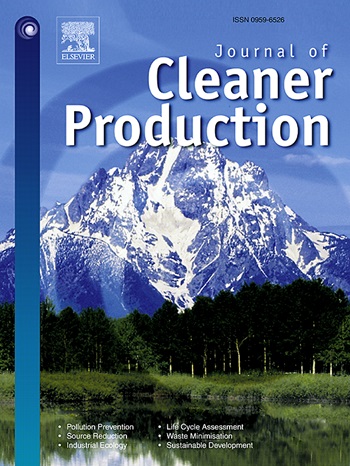Component-level life cycle carbon emission analysis and multi-objective optimization with power characteristics for an adaptively-coupled solar ejector-compression refrigeration system
IF 10
1区 环境科学与生态学
Q1 ENGINEERING, ENVIRONMENTAL
引用次数: 0
Abstract
The solar ejector-compression cooling system holds significant potential for energy savings and carbon reduction in building space cooling or refrigeration, which are high-energy-consuming fields. However, existing solar ejector-compression systems need large solar collectors, which greatly reduce system practicality and may lead to high carbon emissions in manufacture stage. Moreover, the carbon emission generation mechanisms at the component and material levels are lacking for ejection cooling systems. To address these issues, this paper presents a novel solar-powered adaptively coupled ejector-compression refrigeration system to reduce collector area and increase solar efficiency. Consequently, a life-cycle carbon emission model and economic model are established based on detailed component and material level analysis to verify the advantages in carbon emissions and find the direction of system improvement. The results show that compared to conventional ejector-compression refrigeration system, the average energy efficiency of the new system is 3.74, which is 197 % higher than that of conventional system, with a 25.84 % reduction in life-cycle carbon emissions and an 82.97 % reduction in total annual costs. To improve economic performance and optimize carbon emissions, a multi-objective optimization method was employed, selecting the Pareto optimal individual, resulting in life-cycle carbon emissions of 44925.06 kg CO2eq and total annual costs of $1685.83/year, with optimized design parameters being dTc = 3.5 °C, dTe = 3.2 °C, and Ac = 10 m2. Furthermore, the impact of electricity energy structure and electricity price on system performance was analyzed. The new system and research findings are expected to provide new insights into the practicability improvement and carbon reduction of solar ejector-compression cooling systems.
基于功率特性的自适应耦合太阳能喷射器-压缩制冷系统全生命周期碳排放分析与多目标优化
太阳能喷射压缩冷却系统在建筑空间冷却或制冷这一高能耗领域具有巨大的节能和减碳潜力。然而,现有的太阳能喷射压缩系统需要大型太阳能集热器,这大大降低了系统的实用性,并可能导致制造阶段的高碳排放。此外,弹射冷却系统缺乏部件和材料层面的碳排放产生机制。为了解决这些问题,本文提出了一种新型的太阳能自适应耦合喷射器-压缩制冷系统,以减少集热器面积,提高太阳能效率。因此,在详细的成分和物质层面分析的基础上,建立了全生命周期碳排放模型和经济模型,验证了碳排放的优势,找到了系统改进的方向。结果表明:与传统喷射器压缩制冷系统相比,新系统的平均能源效率为3.74,比传统系统提高了197%,全生命周期碳排放量减少了25.84%,年总成本降低了82.97%。为提高经济效益,优化碳排放,采用多目标优化方法,选取Pareto最优个体,优化设计参数为dTc = 3.5℃,dTe = 3.2℃,Ac = 10 m2,得到全生命周期碳排放量为44925.06 kg CO2eq,年总成本为1685.83美元/年。进一步分析了电力能源结构和电价对系统性能的影响。新系统和研究成果有望为太阳能喷射器压缩冷却系统的实用性改进和碳减排提供新的见解。
本文章由计算机程序翻译,如有差异,请以英文原文为准。
求助全文
约1分钟内获得全文
求助全文
来源期刊

Journal of Cleaner Production
环境科学-工程:环境
CiteScore
20.40
自引率
9.00%
发文量
4720
审稿时长
111 days
期刊介绍:
The Journal of Cleaner Production is an international, transdisciplinary journal that addresses and discusses theoretical and practical Cleaner Production, Environmental, and Sustainability issues. It aims to help societies become more sustainable by focusing on the concept of 'Cleaner Production', which aims at preventing waste production and increasing efficiencies in energy, water, resources, and human capital use. The journal serves as a platform for corporations, governments, education institutions, regions, and societies to engage in discussions and research related to Cleaner Production, environmental, and sustainability practices.
 求助内容:
求助内容: 应助结果提醒方式:
应助结果提醒方式:


